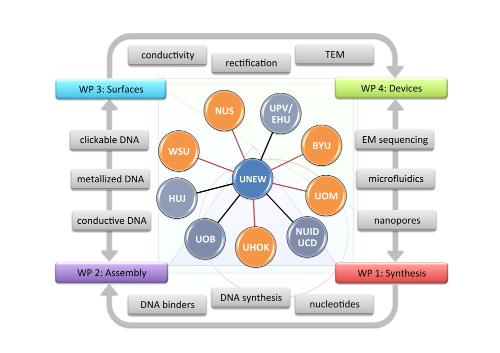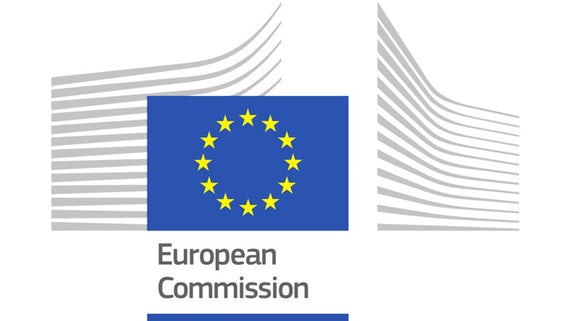Work Packages
WP1. DNA SYNTHESIS: from labelled nucleotides to kilobase modifications
WP1 will employ a battery of DNA synthetic methods to generate short and long DNA chains with specific sequences, repeat units, and modifications. Expertise in synthesis of nucleic acids, DNA binding molecules, and coordination chemistry will be exploited to design new materials required for use in WP2 where DNA is assembled with itself and/or diverse functional species, and in WP3 where the behaviour of functional DNA at interfaces is studied.
WP2. DNA NANOARCHITECTURES: from design to function
DNA can be controlled to adopt a variety of secondary, tertiary and even quaternary motifs, including branches, knots, circles, junctions and multi-stranded structures. Multi-component assemblies, involving or templated on DNA have potential uses in sensing as well as providing new materials. In WP2, materials from WP1 will be exploited to create assemblies of DNA, including origami, to develop electronic components for nanoscale sensing devices, and to provide read-out of hybridisation or denaturation processes via conductance, luminescence, redox, and plasmonic responses.
WP3. DNA AT SURFACES: from surface attachment to physical characterisation
In WP3, modified DNA and composite assemblies with DNA that are developed in WP1 and WP2 will be grafted to different substrate surfaces in order to measure their responses to stimuli using electrochemical, plasmonic, luminescent, and electronic/conductive methods. DNA will be immobilised by covalent, chemisorption or physisorption mechanisms, either perpendicular to or aligned on a variety of materials, or its translocation through pores in membrane materials will be characterised.
WP4. DNA DEVICES: from microfluidics to biomedical sensors
A current trend in molecular diagnostics is the fabrication of disposable, low cost, rugged microfluidic devices for Point-of-Care (PoC) usage in hospitals and the field. In WP4, synthetic materials from WPs1&2, and immobilization and detection strategies developed in WP3, will be tested for incorporation into microfluidic and LOAC systems. Where new materials are identified as promising for market development, the participants will identify suitable commercial routes for exploitation.












